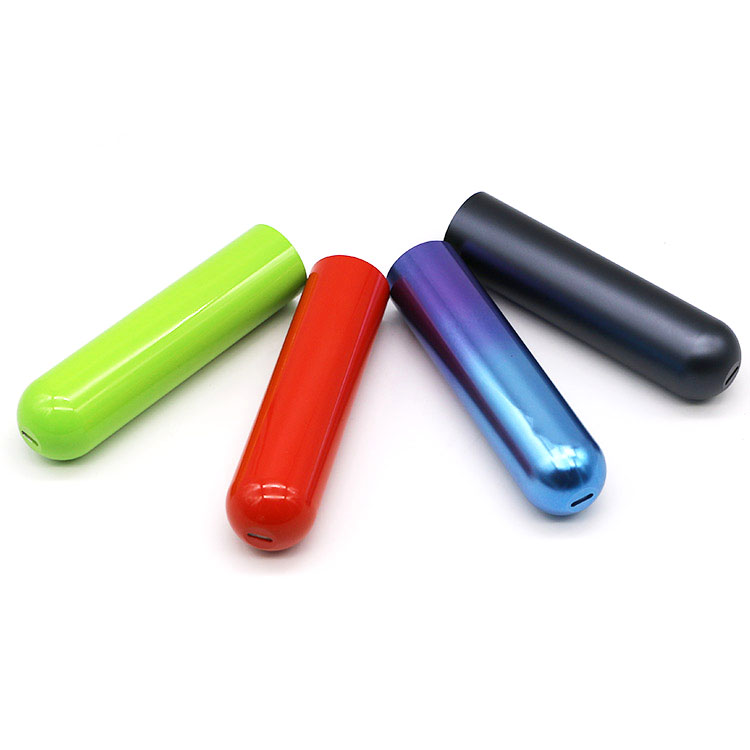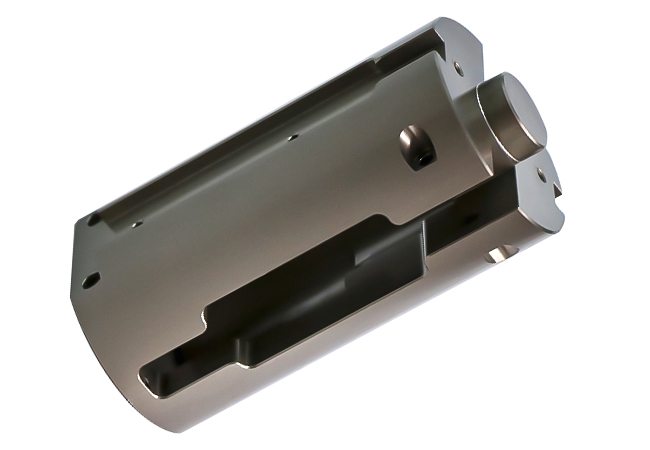VMT’s blogs aim to share our practical experience and knowledge accumulated during the manufacturing and product development process. Our goal is to use these articles to help you improve product design and increase your understanding of CNC machining, 3D printing, rapid prototyping, low-volume manufacturing, and surface treatment technologies. The information we provide is designed to provide actionable guidance and insights for your CNC machining projects.
Aluminum Hard Anodizing: Characteristics and Applications
Aluminum hard anodizing is an important surface treatment technology in CNC machining. Its uniqueness lies in its ability to give aluminum and aluminum alloy products a variety of color options. By forming a hard oxide film on the surface of aluminum and its alloys, it can improve the performance of CNC machined parts, extend their service life, and meet diverse application needs. This article involves the connotation, characteristics, classification, application, etc. of aluminum hard anodizing, and provides an in-depth understanding of aluminum hard anodizing knowledge.

What is Aluminum Hard Anodizing?
Aluminum hard anodizing is an advanced surface treatment technology that forms a durable anodic coating on aluminum and its alloys through an electrochemical process. This process creates a protective oxide film with exceptional hardness, wear resistance, corrosion resistance, and insulation properties. Unlike standard anodizing, hard anodizing—often referred to as hardcoatings or Type III anodizing—utilizes precisely controlled conditions, including a specifically cooled dilute sulfuric acid electrolyte.
The oxide film produced during this process typically ranges from 25 to 150 microns in thickness, with a common range of 50 to 80 microns. For applications requiring enhanced durability and aesthetic appeal, black hardcoat anodizing is a popular choice, offering a sleek finish while maintaining the benefits of hard anodizing.
Compared to raw aluminum or standard anodizing, hard coatings offer enhanced service life, making them ideal for aerospace, automotive, and industrial uses. This versatility broadens the potential of anodized aluminum while retaining the lightweight properties of the base material.
Importance of Sealing Aluminum Hard Anodizing
Sealing is an essential step in the aluminum anodizing process, particularly for hard anodized aluminum. It enhances both the durability and the aesthetic appeal of the anodized coating. While anodizing forms a robust oxide layer, sealing improves its overall performance and extends its lifespan.
Key Benefits of Sealing in Hard Anodizing
Enhanced Corrosion Resistance:
During hardcoat anodizing or type 3 anodizing, the process creates a porous surface. Sealing these pores prevents penetration by moisture, chemicals, and contaminants, aligning with specifications such as AMS 2469 and AMS 2482. This ensures superior corrosion protection for hard-anodized aluminum.
Improved Wear Resistance:
The sealed anodic layer offers increased resistance to abrasion and mechanical wear, making it ideal for components requiring hard coating aluminum. Industries like aerospace and automotive rely on mil-a-8625 type 3 class 1 standards for durability in anodized aluminum parts.
Color Fastness:
Whether you choose clear anodize or colored finishes such as anodize aluminum colors, sealing locks in the dyes applied during type 2 anodizing or type 3 anodize. This ensures lasting vibrancy, especially in applications requiring anodised coating for decorative purposes.
Increased Surface Durability:
Sealed hardcoat anodized surfaces are more resistant to environmental factors and cleaning agents. This makes them a preferred choice for applications demanding high-performance hard-anodized aluminum.
Improved Cleanability:
In sectors like food processing or medical equipment, anodizing aluminum surfaces need to be easy to clean and hygienic. A sealed surface helps achieve this by preventing the accumulation of contaminants within the oxide layer.
What are the Characteristics of Aluminum Hard Anodizing?
- High hardness: The surface hardness of the hard-anodized aluminum material is significantly improved, reaching HV 250-500, which enhances the wear resistance.
- Good wear resistance: The hard oxide film has good wear resistance and can effectively resist friction and wear, extending the service life of aluminum parts.
- Strong corrosion resistance: The oxide film can effectively block the erosion of corrosive media and protect aluminum materials from corrosion and oxidation.
- Excellent insulation performance: The hard anodized film has good insulation performance and is suitable for electronic appliances and other occasions that require insulation treatment.
- Rich colors: Through the dyeing process, aluminum materials can be given rich colors to meet different aesthetic needs.
The Aluminum Anodizing Process
The aluminum anodizing process is an electrochemical treatment that enhances the surface properties of aluminum and its alloys. By transforming the natural oxide layer on aluminum into a thicker, more durable, and corrosion-resistant anodized coating, this process significantly improves the performance and appearance of aluminum materials. The following is steps in the Aluminum Anodizing Process
1. Pre-Treatment:
To prepare for the aluminium anodising process, the surface is cleaned to remove contaminants like grease, oils, or dirt. Mechanical methods, such as polishing or chemical treatments like etching, ensure uniform results. These pre-treatment steps are essential for achieving high-quality anodized aluminum material.
2. Anodizing:
The aluminum is submerged in an electrolytic bath, usually containing sulfuric acid, and an electric current is applied. This controlled reaction converts the aluminum surface into a durable anodized coating. Variants of this process include hard coat anodizing, also known as hard anodizing, which produces thicker, more wear-resistant layers.
3. Oxide Layer Formation:
The thickness of the anodized layer depends on the anodizing type. For standard purposes, the anodising thickness is relatively thin and suitable for decorative applications. For industrial needs, hard anodizing creates a thicker layer for enhanced durability. This flexibility makes anodized aluminum a versatile material.
4. Coloring:
The porous oxide layer can be dyed in a variety of aluminum anodizing colors, such as black, bronze, or gold. This step enhances the aesthetic appeal, making it popular in architectural and consumer applications.
5. Sealing:
To improve the durability of the anodised aluminium layer, the pores are sealed by immersing the material in boiling water or sealing solutions. This step ensures long-lasting corrosion resistance.
6. Inspection and Quality Control:
The anodizing process concludes with a thorough inspection to verify the anodising aluminium process has achieved the desired thickness, color, and quality.
(Note: If you want to read more about aluminum, you can read the following articles:
Advantages and Applications of CNC Aluminum Housings,
How Much Does It Cost to CNC Machining Aluminum Parts?
Hard Chrome Plating Aluminum and Electroplating Aluminum.)
Classification of Aluminum Hard Anodizing?
| Electrolytes | Aluminum hard anodized type | Features | Application Areas |
| sulfuric acid | Sulfuric acid hard anodizing | High hardness, wear resistance | Suitable for anodizing of most aluminum and aluminum alloys |
| oxalic acid | Oxalic acid hard anodizing | Good corrosion resistance | Corrosion resistance requirements under specific conditions, such as chemical equipment, marine environment, etc. |
| Mixed acid | Mixed acid hard anodizing | Combines the advantages of multiple acids, with balanced performance | A variety of complex working conditions, suitable for occasions with special requirements on oxide film performance |
What is the Thickness for Aluminum Hard Anodizing?
The thickness of aluminum hard anodizing typically depends on the specific application and the required durability. The anodizing process creates a thicker oxide layer on the aluminum surface, which improves its corrosion resistance, wear resistance, and aesthetic appearance.
Common Thickness Range:
For standard hard anodizing, the oxide layer thickness is generally between 25 to 100 microns (0.025 to 0.1 mm).
For heavy-duty applications, such as aerospace or military components, anodizing thickness may range from 100 to 250 microns (0.1 to 0.25 mm) or more, depending on the part’s exposure to harsh environments.
What are the Advantages and Disadvantages of Hard Anodizing Aluminum?
Advantages:
- Improve the hardness and wear resistance of aluminum: Aluminum hard anodizing can form a hard oxide film on the surface of aluminum, significantly improving its hardness and giving it excellent wear resistance, especially suitable for applications that need to withstand high friction. or heavy-duty application scenarios.
- Enhanced corrosion resistance: This dense oxide film effectively blocks the intrusion of external corrosive media, greatly enhances the corrosion resistance of aluminum materials, reduces material loss due to corrosion, and thus significantly extends the service life of the product.
- Good insulation performance: Aluminum hard anodized film has excellent insulation performance and is an ideal choice in the electronic and electrical industry. It can effectively protect electronic components from current or electromagnetic interference.
- Rich colors: Through the subsequent dyeing process, aluminum hard anodization can give aluminum materials rich and diverse colors to meet the needs of personalized customization, while improving the appearance texture and visual appeal of the product, making the product more competitive in the market.
- Good adhesion and stability: The oxide film and the aluminum substrate are tightly bonded and not easy to fall off, ensuring the long-term stability of the product.
Disadvantages:
- The production cost is relatively high, especially for large or complex aluminum parts.
- The oxide layer thickness is limited and additional protection may be required for extreme wear environments.
- The processing process needs to be precisely controlled to avoid problems such as uneven oxide layer or cracking.
What are the Precautions for Hard Anodizing Aluminum?
- Pre-treatment for aluminum hard anodizing: Make sure the surface of the aluminum parts is clean and free of oil, otherwise it will affect the quality of the oxide layer.
- Electrolyte selection: Select the appropriate electrolyte according to the type of aluminum material and application requirements.
- Process parameter control: Precisely control process parameters such as voltage, temperature, and time to obtain ideal oxide layer quality.
- Follow-up treatment: seal the holes in time to prevent the oxide layer from absorbing moisture or being contaminated.

Application
Aluminum hard anodizing is widely used in CNC machining aluminum parts, such as aerospace, automobile manufacturing, electronic appliances, architectural decoration and other fields.
- In the aerospace field: it is used to improve the wear resistance and corrosion resistance of engine parts and flight control components.
- In the automotive industry: it is used for surface treatment of key components such as wheels and engine parts.
- In the electronic and electrical industry: because of its excellent insulation Popular for performance and corrosion resistance, Such as integrated circuits, capacitors, etc.
Frequently asked questions when hard anodizing aluminum?
- Uneven oxide layer: It may be caused by uneven stirring of the electrolyte or voltage fluctuations. Solutions include optimizing the electrolyte circulation system, stabilizing power supply, etc.
- Cracking or peeling of the oxide layer: This is mostly caused by the internal stress of the aluminum material not being eliminated or the temperature of the electrolyte being too high. During oxidation, attention should be paid to annealing to eliminate stress, control the electrolyte temperature, etc.
- Uneven or Fading Color: Improper dyeing process or poor quality oxide layer can cause uneven or fading color. Optimization suggestions include improving the dyeing process and improving the quality of the oxide layer.
Conclusion
Aluminum hard anodizing is a key surface treatment technology in CNC machining. It significantly improves the hardness, wear resistance and corrosion resistance of aluminum parts, prolongs the service life, and has excellent insulation properties and rich color options. It is also widely used in aerospace, automotive, electronics and other fields.
Our Aluminum Hard Anodizing Services
In the field of CNC machining, VMT provides professional aluminum hard anodizing services, realizing a one-stop solution for the entire chain from product optimization design to surface treatment. We focus on tailoring high-performance, long-life, and beautiful aluminum parts for customers. Through advanced electrochemical treatment technology, a hard, wear-resistant, corrosion-resistant, and insulating oxide film is generated on the surface of aluminum and aluminum alloys, thereby significantly improving the overall performance of aluminum. Still hesitating? Contact us now and let our professional CNC machining and surface treatment technology add luster to your products.
Frequently Asked Questions
How Is Aluminum Anodized?
Aluminum is anodized through an electrochemical process. The metal is placed in an acid electrolyte bath and an electric current is passed through it. This creates a controlled oxide layer on the surface, improving corrosion resistance, durability, and allowing for dyeing or coloring.
How to Black Anodize Aluminum?
1. Anodize the aluminum using the standard process to create a porous oxide layer.
2. Dye the surface using a black anodizing dye, which penetrates the pores.
3. Seal the surface by boiling it in hot water or a sealing solution, locking the color in place.
How to Tell If Aluminum Is Anodized?
You can tell if aluminum is anodized by its:
Appearance: Anodized aluminum often has a matte or satin finish and may be dyed in various colors.
Conductivity: Anodized surfaces are non-conductive due to the insulating oxide layer.
Scratch Resistance: It is harder and more scratch-resistant than raw aluminum.
Does Aluminum Change Color When Heated?
Yes, aluminum can change color when heated, particularly at high temperatures. It may develop a dull gray or whitish oxide layer, and prolonged heating can cause discoloration or tarnishing.
How to Remove Hard Anodizing from Aluminum?
Removing hard anodizing from aluminum can be achieved through various methods, with the most common being chemical removal using a caustic soda solution. The aluminum part is submerged in a hot, concentrated sodium hydroxide bath, which dissolves the anodized layer.
Another method is abrasive blasting, where abrasive materials like sand or glass beads are used to wear away the anodized coating. For more precise removal, an electrolytic process can be used, where sulfuric acid and electric current break down the oxide layer. Each method requires careful handling to avoid damaging the base material.
Does Anodizing Add Thickness?
Yes, anodizing adds thickness to aluminum. The oxide layer typically adds 0.0001 to 0.001 inches (2.5 to 25 microns) of thickness, depending on the type of anodizing process used. This layer is both integral to and protective of the aluminum.



